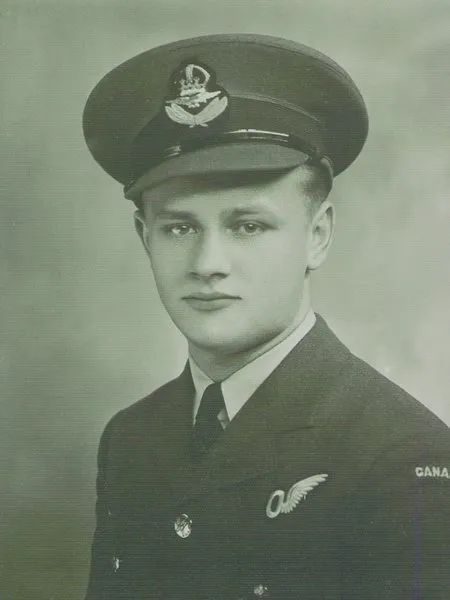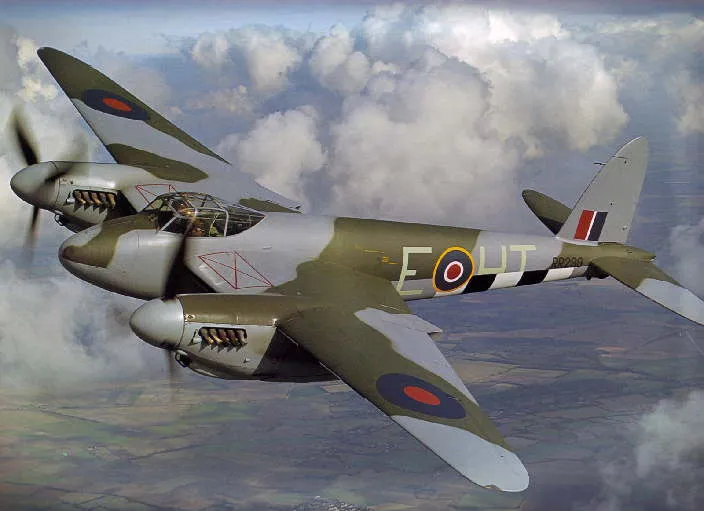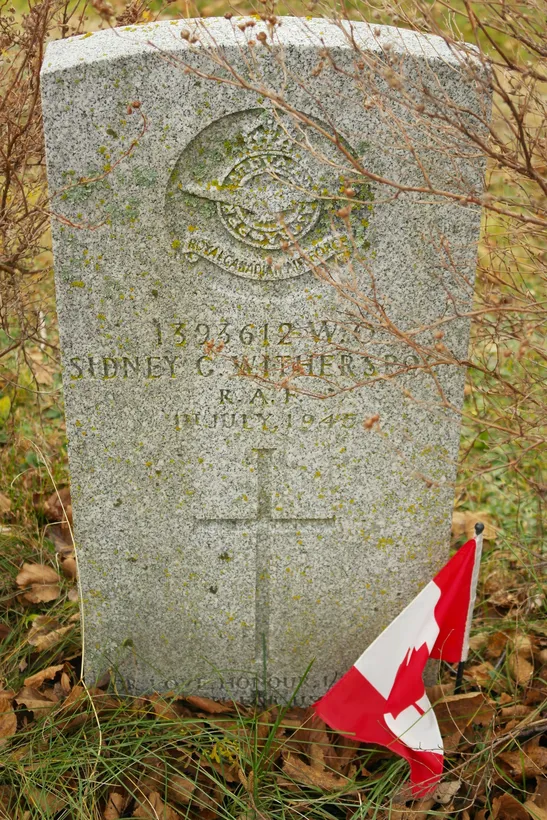Sopuck, Vladimir Joseph (Flight Lieutenant)
Killed in Flying Accident 1945-July-01


Birth Date: 1921-March-13
Born: Czechoslovakia
Parents: Son of Joseph P. Sopuck and Marie Sopuck, of Winnipeg, Manitoba; husband of Eleanore Sopuck, of Verdun.
Spouse: Husband of Eleanore (nee Volkert) Sopuck, of Verdun, Quebec
Home: Winnipeg, Manitoba
Enlistment:
Enlistment Date: unkown date
Service
RCAF
Unit
45 Group (RAF)
Base
Dorval, Quebec
Rank
Flight Lieutenant
Position
Navigator/Wireless Operator
Service Numbers
J/24247
Prev: R/166253
Crew or Other Personnel
Mosquito KA316
Mission
Mosquito FB.Mk. 26 KA316
Aircraft Ferrying 1945-July-01 to 1945-July-01
45 (T) Group (RAF) Dorval, Quebec
45 Group RAF Transport Command. Mosquito FB26 aircraft KA 316 was making a one engine approach to the airfield after the port engine failed on a ferry training flight, lost height on the last turn and the tail wheel struck a fence. The aircraft somersaulted, crashed and burned six miles south-west of Mont Joli, Quebec
Navigator/Wireless Operator Flight Lieutenant VJ Sopuck (RCAF) and Pilot, Warrant Officer Class 1 SG Witherspoon (RAFVR), both members of 6 Ferry Unit, were killed in this flying accident
Ocean Bridge, The History of RAF Ferry Command by Carl A Christie page 329![]() [Royal Air Force Serial and Image Database]...
[Royal Air Force Serial and Image Database]...
![]() Moonlight Flyer: Diary of a Second World War Navigator - John Gellne...
Moonlight Flyer: Diary of a Second World War Navigator - John Gellne...
Mosquito serial: KA316

The de Havilland DH.98 Mosquito was a British twin-engine shoulder-winged multi-role combat aircraft, introduced during the Second World War. It was one of few operational front-line aircraft of the era whose frame was constructed almost entirely of wood. Nicknamed The Wooden Wonder, it was affectionately as the "Mossie" to its crews. The total number of DH98 Mosquito aircraft built was 7,781, the type serving with the main Allied air forces, including both the United States and Russia.
When Mosquito production began in 1941 it was the fastest propeller driven operational aircraft in the world. The first variant was an unarmed, high-speed, high-altitude photo-reconnaissance aircraft. Originally conceived as an unarmed fast bomber, the Mosquito's use evolved during the war into many roles including low to medium-altitude daytime tactical bomber, high-altitude night bomber, pathfinder, day or night fighter, fighter-bomber, intruder, and maritime strike aircraft. It was also used by the British Overseas Airways Corporation (BOAC) as a fast transport to carry small high-value cargoes to, and from, neutral countries, through enemy-controlled airspace. The crew of two, pilot and navigator, sat side by side, but a single passenger could ride in the aircraft's bomb bay when necessary.
The Mosquito FB Mk. VI was often flown in special raids, such as Operation Jericho, an attack on Amiens Prison in early 1944, and precision attacks against military intelligence, security and police facilities (such as Gestapo headquarters). On the 10th anniversary of the Nazi' seizure of power in 1943, a morning Mosquito attack knocked out the main Berlin broadcasting station while Hermann Goering was speaking, putting his speech off the air. Goering later said: "It makes me furious when I see the Mosquito. I turn green and yellow with envy. There is nothing the British do not have. They have the geniuses and we have the nincompoops."
The Mosquito flew with the RCAF and other air forces in the European, Mediterranean and Italian theatres. After the end of the Second World War Spartan Air Services flew 10 ex-RAF Mosquitoes, mostly B.35's plus one of only six PR.35's built, for high-altitude photographic survey work in Canada. There are approximately 30 non-flying Mosquitos around the world with five airworthy examples, four in the United States, and one in Canada. Harold Skaarup web page and Wikipedia
![]() BAE Systems (formerly De Havilland)
BAE Systems (formerly De Havilland)
Aircraft Images
Mosquito KA316
Mosquito FB.Mk. 26 KA316
1945-July-01 Accident: 4S GROUP Loc: Aerodrome Names: Sopuck | Witherspoon
1945-07-01 Accident Crash Engine cut in circuit 5m SW of Mont Joli PQ

